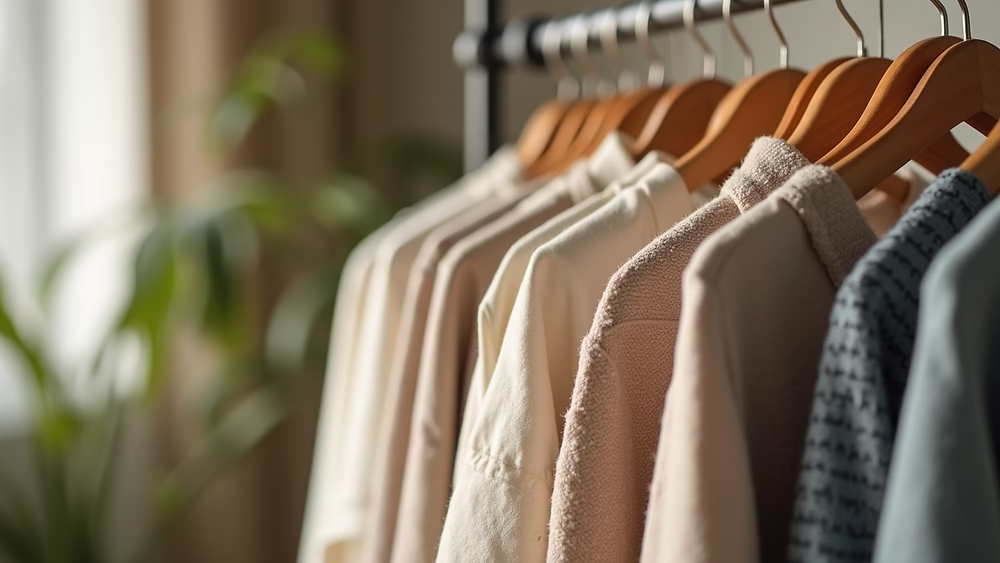Generation Z is a powerful force of change, known for its digital fluency, social consciousness, and a deep-seated desire for authenticity. In Kenya, this generation is not just following global trends; they’re actively shaping them, particularly within the fashion industry. Unlike previous generations, Gen Z is increasingly aware of the detrimental impact of fast fashion – the endless cycle of cheaply made, quickly discarded clothing – on both the environment and human rights. From textile waste overflowing at Dandora dumpsite to questionable labor practices in global supply chains, the true cost of that “bargain” top is becoming painfully clear.
At Retail Place, we celebrate Gen Z’s commitment to a more sustainable future. This comprehensive guide provides actionable sustainable fashion tips for Gen Z shoppers in Kenya, proving that looking stylish and expressing your unique identity doesn’t have to come at the expense of the planet or your wallet. It’s about making conscious choices that align with your values.
Why Sustainable Fashion Resonates with Gen Z in Kenya
Gen Z’s embrace of sustainable fashion isn’t just a trend; it’s a movement rooted in their core values:
- Environmental Awareness: They’ve grown up with climate change as a constant backdrop and understand the urgency of reducing waste and pollution. The textile waste crisis in Kenya, fueled by mitumba (second-hand clothes) that are often too damaged to be resold, is a local reality.
- Ethical Concerns: They care about where their clothes come from and if the people who made them were treated fairly and paid decent wages.
- Authenticity & Individuality: Fast fashion creates uniform trends. Sustainable choices, especially thrifting and upcycling, allow for truly unique and personal style expression.
- Budget-Consciousness: While valuing sustainability, Gen Z in Kenya is also incredibly frugal and value-driven, seeking smart ways to stretch their shillings.
Read: Your Guide to Nairobi’s Second-Hand Markets.
1. Embrace the Thrift Revolution: Gikomba is Your Goldmine!
In Kenya, thrifting (buying mitumba) has always been a way of life, but for Gen Z, it’s a conscious choice and a fashion statement.
- The Thrill of the Find: Markets like Gikomba, Toi Market, and Ngara are treasure troves of unique, vintage, and high-quality items at incredibly affordable prices. It’s a treasure hunt that yields one-of-a-kind pieces.
- Reduce Waste: By giving pre-loved clothes a second life, you directly divert textile waste from overflowing landfills.
- Unique Style: Ditch the “Kenya uniform” of mass-produced fast fashion. Thrifting allows you to develop a personal style that’s truly your own, mixing eras and aesthetics.
- Tips for Thrifting:
- Go Early: For the best selection.
- Inspect Carefully: Check for tears, stains, and missing buttons.
- Be Patient: Finding gems takes time.
- Wash Thoroughly: Always wash mitumba thoroughly before wearing.
- Bargain (Respectfully): It’s part of the market culture, but be fair.
- Online Thrift Stores: Many young Kenyan entrepreneurs run successful online thrift shops on Instagram and TikTok, offering curated collections.
2. Support Local & Ethical Kenyan Brands
Kenya has a growing number of designers and brands committed to ethical production and sustainable practices.
- Fair Wages & Conditions: These brands often prioritize fair wages, safe working conditions, and empowerment for local artisans and garment workers.
- Reduced Carbon Footprint: Manufacturing locally reduces transportation emissions compared to importing from distant factories.
- Unique Designs: Many local brands incorporate traditional fabrics, motifs, and craftsmanship, offering pieces that reflect Kenyan culture.
- Quality Over Quantity: Ethical brands typically focus on producing higher-quality, durable pieces designed to last, promoting “slow fashion.”
- Look For: Brands like MOYO, Zuri, or those associated with the Ethical Fashion Initiative (EFI) in Kenya, which supports local artisans. Look for transparency in their sourcing and production.
3. Embrace Upcycling & DIY: Be Your Own Designer!
Transforming old clothes into new, stylish pieces is the ultimate form of sustainable self-expression.
- Unleash Creativity: Got an old pair of jeans? Turn them into shorts, a skirt, or even a bag. A large t-shirt can become a crop top or a unique tote.
- Give Garments a Second Life: Upcycling breathes new life into items that might otherwise be discarded, significantly reducing waste.
- Save Money: No need to buy new when you can create!
- Simple Ideas:
- Tie-dyeing old t-shirts.
- Cropping or distressing jeans.
- Adding patches or embroidery.
- Turning scarves into tops or head wraps.
- Learning basic sewing skills to mend or alter clothes.
4. Invest in Quality, Not Quantity (When Buying New)
While thrifting is king, sometimes you need to buy new. Make those purchases count.
- “Cost Per Wear” Mindset: Instead of focusing on the upfront price, think about how many times you’ll wear an item. A slightly more expensive, well-made piece that lasts for years is more sustainable (and often cheaper in the long run) than multiple cheap items that fall apart quickly.
- Timeless Staples: Build a wardrobe of versatile, classic pieces that can be mixed and matched and won’t go out of style next season.
- Natural & Durable Fabrics: Opt for natural fibers like organic cotton, linen, hemp, or Tencel which are often more durable and biodegradable than synthetic alternatives like polyester (which contributes to microplastic pollution).
- Check Certifications: While not always visible in Kenya, globally recognized certifications like GOTS (Global Organic Textile Standard), Fair Trade, or Bluesign indicate sustainable and ethical production.
5. Care for Your Clothes to Make Them Last
The most sustainable garment is the one you already own. Proper care extends its lifespan.
- Follow Care Labels: Different fabrics require different washing temperatures and methods.
- Wash Less, Spot Clean More: Don’t wash clothes after every wear if they’re not dirty. Air them out or spot clean stains.
- Wash Cold & Air Dry: Saves energy and is gentler on clothes, preventing shrinkage and extending their life.
- Repair, Don’t Replace: Learn basic mending skills (sewing on a button, patching a small hole) or support local tailors and repair shops.
6. Swap, Borrow & Rent: Share the Wardrobe Love
Expand your wardrobe without buying new.
- Clothing Swaps: Organize or join clothing swap events with friends or local communities. It’s a fun, free way to refresh your style.
- Borrow for Occasions: For special events (weddings, graduations), consider borrowing a dress or suit from a friend instead of buying something you’ll wear once.
- Rental Services: While less common for everyday wear in Kenya, event-wear rental services are emerging.
Gen Z in Kenya is at the forefront of a fashion revolution, blending style with a strong sense of responsibility. By embracing thrifting, supporting local ethical brands, getting creative with upcycling, making conscious new purchases, and caring for their clothes, they are proving that sustainable fashion is not just a niche movement, but the future of style. Make your wardrobe a statement of your values with these tips from Retail Place!









